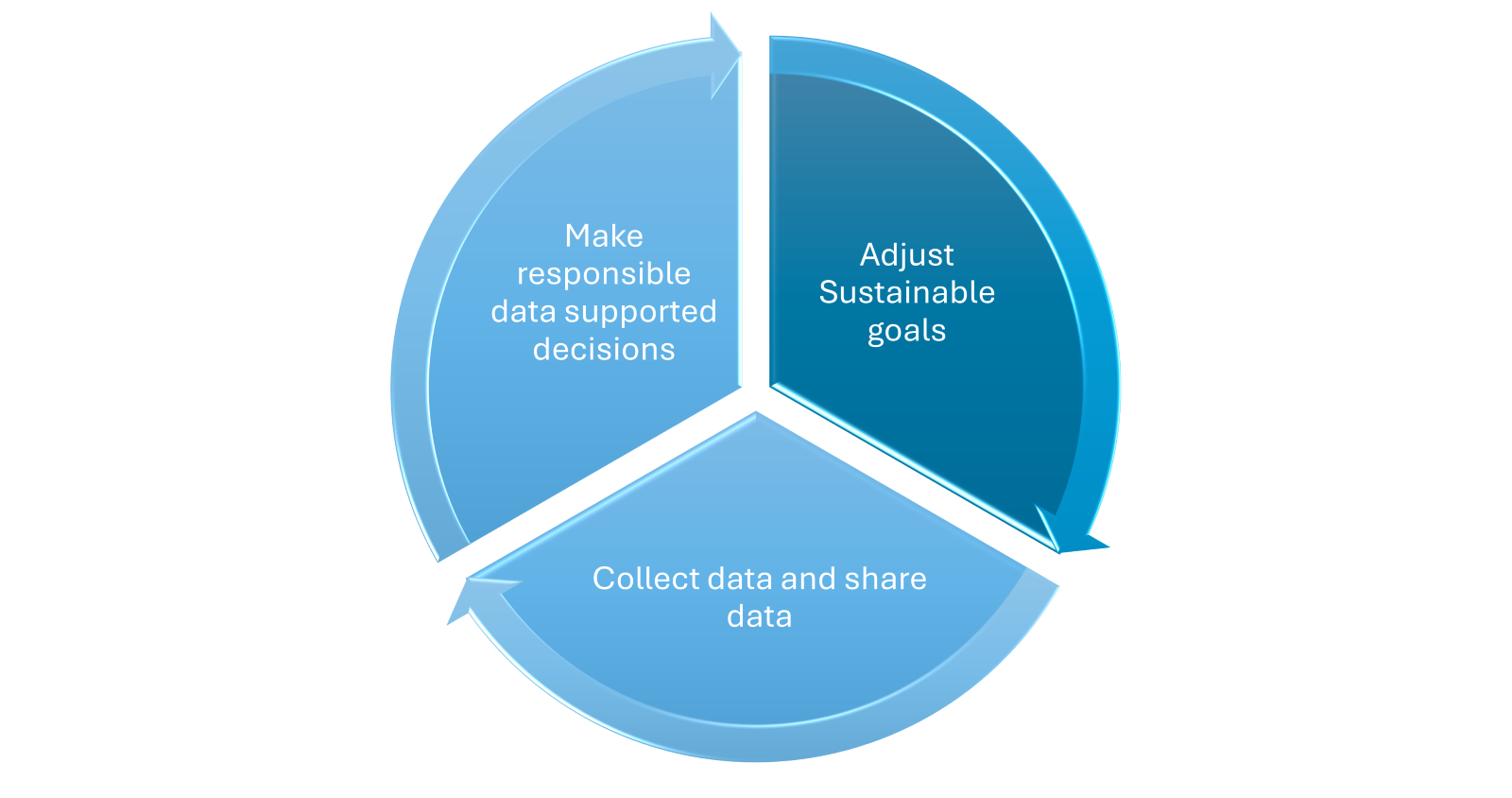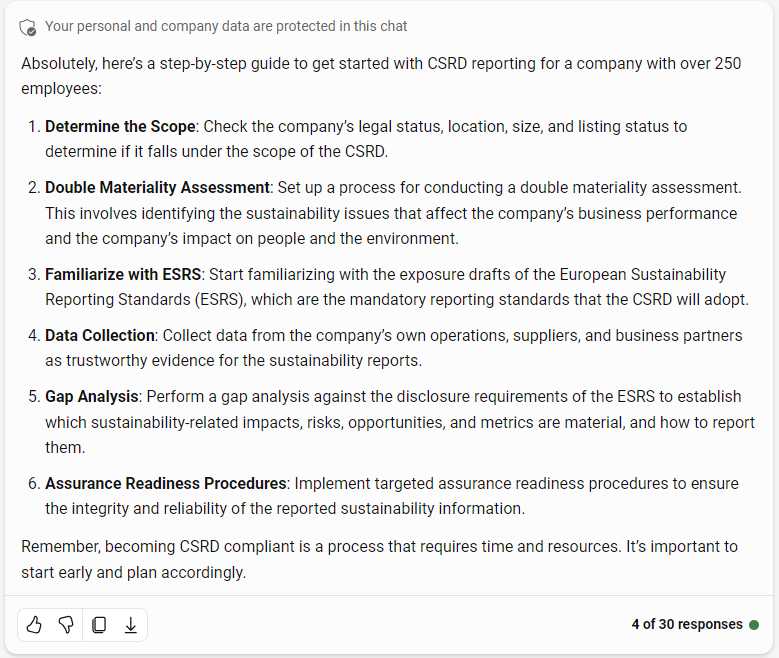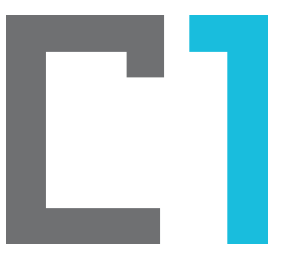“As a responsible for sustainability reporting, I want accurate data about sustainability measures so that I can provide data for responsible decision-making, and our organization can meet the regulatory requirements. ”
Sustainability targets are set for the whole organization. Data for sustainability metrics are gathered across the whole organization. This team effort might sound overwhelming.
In 2023 we decided to develop Cloud1’s sustainability as part of our renewed strategy, and we made an environmental, social, and governmental (ESG) sustainability development plan. As a mid-sized company, we are not yet obliged to do Corporate Sustainability Reporting Directive (CSRD) reporting and, therefore the first report was formed into an Excel.
Even though at Cloud1 we do not manufacture anything and there are only around 70 of us, I would’ve loved to have the means to collect the appropriate data via our own data hub instead of collecting it manually. Next time I’ll do that, and so could you.
Understanding the Corporate Social Sustainability Reporting Directive
If you are reading this, you probably know that CSRD stands for: Corporate Sustainability Reporting Directive. This is an EU-level initiative to make the world a better place, which is commendable. The CSRD represents a significant advancement over the previous Non-Financial Reporting Directive (NFRD), demanding more detailed and verifiable disclosure of sustainability performance by EU companies. The CSRD requires companies to disclose more information on their sustainability performance and to have their non-financial data audited and published along with their financial statements.
According to the CSRD, companies have to report on their impact and performance relating to a broad range of environmental (E), social and human rights (S), and governance factors (G) according to a uniform set of reporting standards [1]. These ESG-report factors include, but are not limited to, the following [2]:
- Climate change mitigation and adaptation
- Water and marine resources
- Circular economy and waste prevention
- Pollution prevention and control
- Biodiversity and ecosystems
- Human rights, including labour rights and working conditions
- Anti-corruption and anti-bribery
- Board diversity and gender balance
- Tax transparency and country-by-country reporting
The CSRD also requires companies to report on their sustainability strategy, targets, policies, due diligence processes, outcomes, and principal risks, as well as the role of the board and management in overseeing and managing these aspects [2]. The reporting should follow a double materiality perspective, meaning that companies should disclose both how sustainability issues affect their business performance and how their activities affect people and the environment [3]. The reporting should be consistent, comparable, reliable, and verifiable[2].

Companies have been disclosing their social and environmental impact and performance for a long time under the previous EU rules. However, the new CSRD introduces a major change: the sustainability data must be verifiable by external auditors. There are already tools that provide a platform for CSRD report data collection but ultimately what is required is a toolset to collect, store, process, and deliver data – the exact purpose of a data platform.
How would it sound to have up-to-date traceable sustainability data every month or even every day to support your sustainable decision-making?
Data Platform as a CSRD Platform
A data platform is a combination of technologies that work together to meet an organization’s data needs. It stores, manages, and shares data from various sources. It is for making it easier to access, analyze, and utilize data for various applications. Data Platform is for facilitating data discovery, data storing, data access, and data collaboration.
Cloud1 has been pioneering in a field of safe, maintainable, and modular data platforms that you can extend to a datahub that also manages system integrations and data delivery to almost any data solution or product. The Cloud1 Data Hub Concept has also a data governance model that supports data ownership, discoverability, and quality. Therefore, the Cloud1 Datahub Concept can be a sustainability lead's best tool to automatize data collection for the CSRD report.
There are at least two major points that support the decision to use your data platform as a CSRD reporting platform.
- Data must be verifiable
2. Data collection is a company wide effort
For the first point, it is obvious that, if there is a well-managed data storage, one can provide easy access for the controller to verify the origin, quality, and timeliness of the data.
The second point is what brings us to the core of why I am writing this. If an organization has a data domain-based data governance model and even a decent data catalog, the sustainability reporting team can identify the stakeholders needed for collecting and maintaining reporting data.
The main idea in the data governance model is that all the data in the data platform belongs to a data domain. The Data Domain collects data that has the same general purpose in an organization and therefore has a data domain owner who knows what data there is and how it can be utilized. A Data Domain owner does not have to be a data guru but must know what data there is in their domain. Data Domains develop data products (or data assets as we call them here at Cloud1) that are a collection of data developed for a certain purpose - say for sustainability reporting. CSRD-related data domain could be “Financial data” and data product/asset could be “Invoicing Accuracy”.
With a data domain-based data governance model organization, when the data needed is identified, it can distribute the data collection to the business processes. When new processes are needed the collection of data can be collected under the same data governance model as all the other data in the company. When an organization changes, it is easy to identify if the data ownership needs to be transferred.
Companies can use data governance tools to catalog these data assets/products. One tool that could help in this process is, for example, Unified Data Governance with Microsoft Purview | Microsoft Azure. The Data Governance process doesn’t have to be a huge effort. A Data domain-based governance model can be introduced to the organization incrementally. Many companies already have a rather good idea of their main business areas and processes on top of which this non-invasive data governance model can be implemented.
How to get Started Collecting CSRD Reporting Data?
I asked Bing Enterprise how to get started with CSRD Reporting Data.

I didn’t check if there are many more steps than what Bing suggested, but when you get to steps 5 and 6, a good, compliant option is to use your data platform to collect the data needed and we are more than happy to help you with that! Leading sustainability most certainly requires a lot of data, but as it should be woven into everything companies do, it might make sense to collect the data in the same place where all the other data is.
We have helped our customers with sustainability data collection and have even built PowerApps to collect the data from our customers’ stakeholders. We understand that companies most likely want to share and present the data to the public. A well-governed data estate also supports sustainability as it provides trustworthy, democratic, transparent data that won’t waste resources. Cloud1’s Datahub is an Azure-based data platform, but the data governance model is universal.
In conclusion, I would love to comfort Sustainability Leads, CFO’s and everyone facing the reporting challenges, that “it is just data”. It can be found, collected, processed, and delivered.
All that data, let us help to leverage it.
BR,
Sanna
Ps. Our Principal Data Architect Marko Oja has written more about data mesh here: Mistä pidän Data Meshissä (cloud1.fi). He has also written about what is Data Governance and how it compares to data management: Data Governance ja Data Management – tiedon hallintamallien juurilla (cloud1.fi).
Pps. Parts of this blog post is written by Bing Enterprise.
References:
- CSRD reporting: What you need to know | Grant Thornton
- Corporate sustainability reporting - Finance
- The Corporate Sustainability Reporting Directive (CSRD) - Plan A Academy


